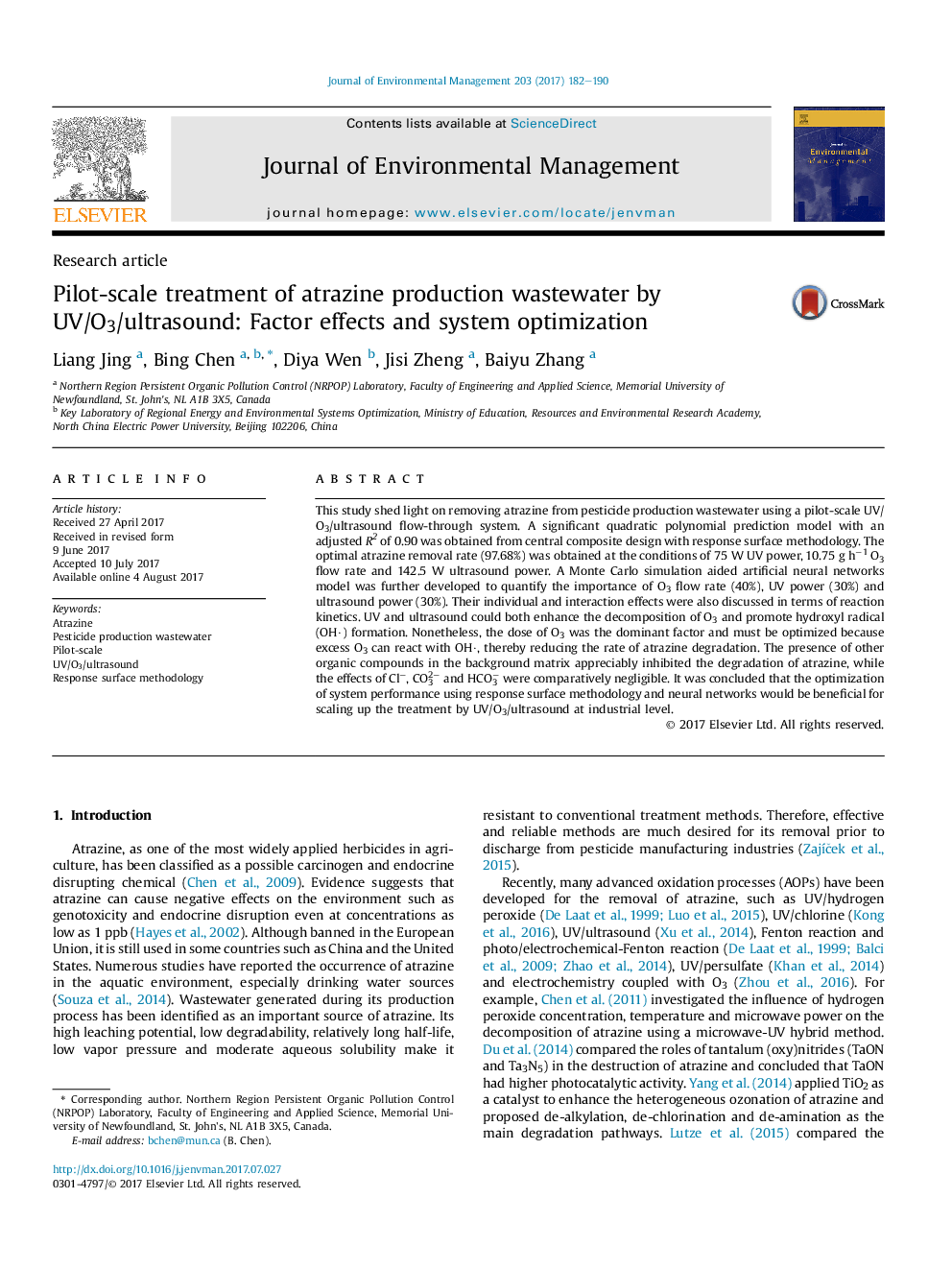| کد مقاله | کد نشریه | سال انتشار | مقاله انگلیسی | نسخه تمام متن |
|---|---|---|---|---|
| 5116503 | 1378099 | 2017 | 9 صفحه PDF | دانلود رایگان |

- A pilot-scale UV/O3/ultrasound system can well remove atrazine from wastewater.
- Response surface methodology was used for treatment system optimization.
- Monte Carlo aided neural networks model was used for quantifying factor effect.
- The dose of O3 was the most influential factor and had to be properly optimized.
- UV had a slight positive influence while ultrasound had a quadratic effect.
This study shed light on removing atrazine from pesticide production wastewater using a pilot-scale UV/O3/ultrasound flow-through system. A significant quadratic polynomial prediction model with an adjusted R2 of 0.90 was obtained from central composite design with response surface methodology. The optimal atrazine removal rate (97.68%) was obtained at the conditions of 75 W UV power, 10.75 g hâ1 O3 flow rate and 142.5 W ultrasound power. A Monte Carlo simulation aided artificial neural networks model was further developed to quantify the importance of O3 flow rate (40%), UV power (30%) and ultrasound power (30%). Their individual and interaction effects were also discussed in terms of reaction kinetics. UV and ultrasound could both enhance the decomposition of O3 and promote hydroxyl radical (OH·) formation. Nonetheless, the dose of O3 was the dominant factor and must be optimized because excess O3 can react with OH·, thereby reducing the rate of atrazine degradation. The presence of other organic compounds in the background matrix appreciably inhibited the degradation of atrazine, while the effects of Clâ, CO32â and HCO3â were comparatively negligible. It was concluded that the optimization of system performance using response surface methodology and neural networks would be beneficial for scaling up the treatment by UV/O3/ultrasound at industrial level.
Journal: Journal of Environmental Management - Volume 203, Part 1, 1 December 2017, Pages 182-190